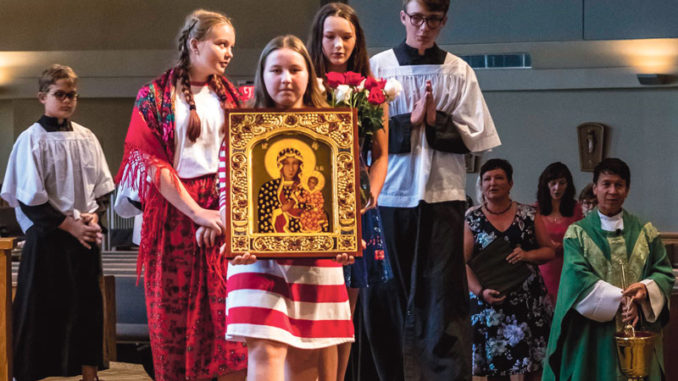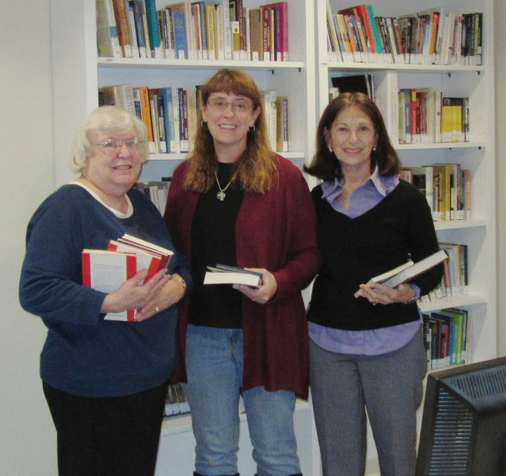
SIMPSONVILLE—The Polish community of the Upstate celebrated 10 years of Polish-language Masses at St. Mary Magdalene recently. During the homily, Father Theo Trujillo thanked the community for its example in the parish.
“Through your culture, devotion, and traditions,” he said, you are “leading people to Christ.”
Alluding to the day’s Gospel reading of Lazarus and the Rich Man, Father Trujillo praised the group for sharing its cultural riches with the parish.
The church began celebrating a monthly Polish-language Mass shortly after Father Trujillo’s arrival, when the priest received a request from Malgorzata Zwolski.
Without knowing whether it would even be possible to find a Polish-speaking priest, Father Trujillo agreed, suggesting immediately a monthly Mass, Zwolski said.
“It was a real act of faith,” she said.
Ten years later, the monthly Polish Mass is still held on the last Sunday of every month at 3 p.m. This has been particularly challenging the last two years as there has been no Polish-speaking priest in the area. Father Trujillo insisted that the Masses continue, celebrating them himself in English, with the congregants responding in Polish.
Recently, though, Father Trujillo has begun learning the liturgy in Polish and now celebrates the consecration entirely in Polish, along with the readings. It is a blessing for the community, helping them feel connected to the U.S. while retaining their traditions and language.
Przemyslaw Wlodarczyk, a parishioner and member of the Polish choir, said he feels “blessed to pray in [his] native language” and appreciates “the opportunity to build spiritual relationships with other Poles” at the Masses.
In appreciation for the support of Father Trujillo and the parish, the Polish community gifted them with a hand-painted replica of the Black Madonna of Czestochowa, also known as Our Lady of Jasna Gora.
The Black Madonna has for centuries been the focus of Poland’s spiritual life. Devoted to Mary, Poles hold the Black Madonna in particular reverence. They credit Our Lady of Jasna Gora with the miraculous intervention of 1655, when 70 monks and 180 locals withstood a siege of 4,000 Swedes. As a symbol of honor, Polish Solidarity leader Lech Walesa always wore a pin with the image of the Black Madonna during their struggle against Communism in the 1980s.
The first non-Communist leader of Poland made a pilgrimage to Czestochowa shortly after his election, and Pope St. John Paul II made many pilgrimages during his life.
Now, every summer Poles set out on foot to make a pilgrimage to Czestochowa, and almost all high school seniors make the trek to pray to Our Lady before taking their final exit exams in May.
According to legend, St. Luke painted the Black Madonna on a cedar tabletop, built by Jesus, as he discussed with Mary her life and Jesus’ ministry in preparation for writing his Gospel.
The painting made it from Jerusalem to Constantinople, with St. Helena, Charlemagne, and Louis of Anjou, who was King of Poland, all playing a part in the journey.
By Gary Scott/Special to The Catholic Miscellany



